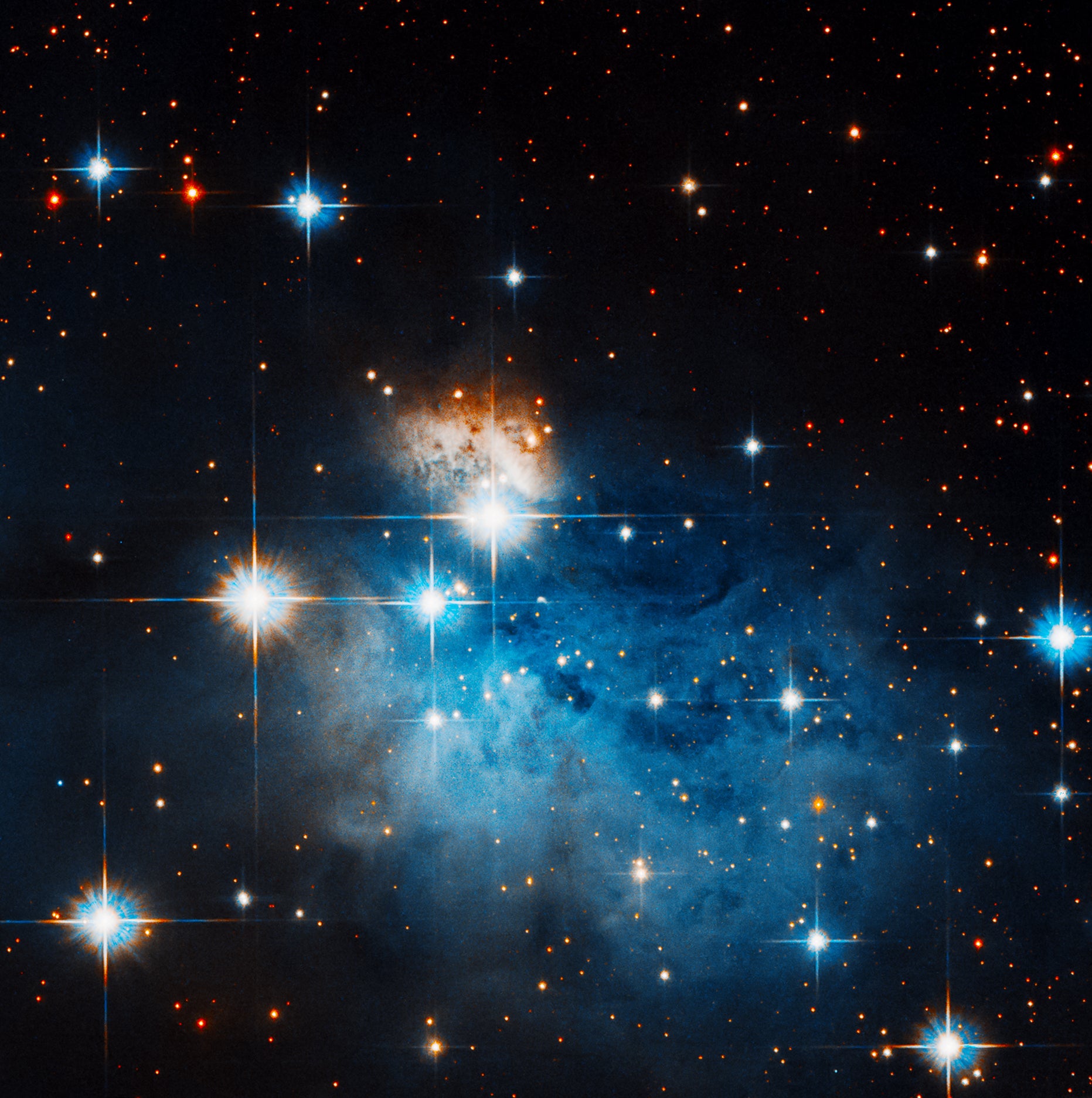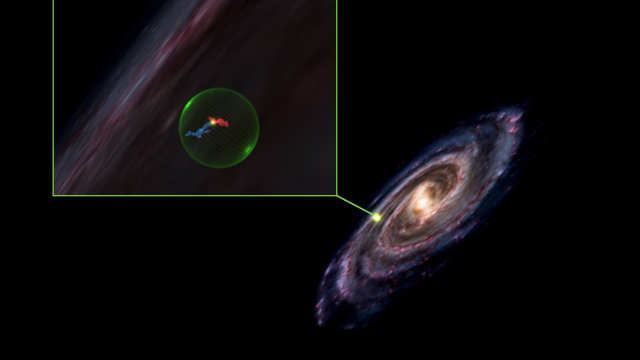Astronomers measuring the shapes and sizes of two gas clouds in space have discovered a big gap between them, leading them to believe that the clouds are what’s left of a series of stellar explosions or a single massive one.
The cavity in space is 500 light-years across and sits between the constellations Perseus and Taurus, which both host giant gas clouds called molecular clouds. Researchers studying the empty space believe one of two things may have happened: Either a single, massive supernova blasted all the gassy material outward, or several supernovae created the two clouds, with tons of space between them.
Supernovae are expected to push gas outward from the site of their explosion, which causes all that gas to form a shell-like geometry. In this case, the two cloud structures on either side of the space became Perseus and Taurus. Together, they form the “Per-Tau Shell.” The team’s research is published today in two papers in the Astrophysical Journal Letters.
“One may still expect to see remnants of the stellar cluster, in which the supernova(e) went off,” said co-author Shmuel Bialy, a theoretical astrophysicist at the Centre for Astrophysics | Harvard and Smithsonian, in an email to Gizmodo. “We see some preliminary evidence for such a stellar cluster in the centre, however this requires further analysis, and this is something we plan to dive into in the future.”
The Perseus and Taurus gas clouds are stellar nurseries in the Milky Way, meaning they give birth to new stars. The team actually discovered the cavity between the clouds after rendering the objects in 3D, the first time this sort of approach has been done, to see their structure as never before. Perseus and Taurus are just two of a dozen clouds whose structures the team have now mapped in 3D.

“We’ve been able to see these clouds for decades, but we never knew their true shape, depth or thickness. We also were unsure how far away the clouds were,” said lead author Catherine Zucker, a postdoctoral researcher at the Centre for Astrophysics | Harvard and Smithsonian, in a press release. “Now we know where they lie with only 1 per cent uncertainty, allowing us to discern this void between them.”
The cavity is perhaps most visible in an interactive model that allows you to drag and resize the molecular clouds and the space between them. The team will probe the centre of that space to find evidence of the supernova (or novae)’s origin, like arson investigators looking for a snuffed-out match. The 3D model can also be visualized in augmented reality using a QR code in the paper.
You can basically think of the Per-Tau shell as a nebula: the typically dazzling shapes of gas clouds that emerge in the aftermath of a star’s death. But in this case, the gas clouds didn’t appear in the blast’s immediate aftermath, and the Per-Tau shell doesn’t emit high-energy X-rays like nebulae do.
“We think the Per-Tau shell we see is a direct result of the supernova, only that we observe it at a much later stage (after some 10-20 million years), and thus the shell has already expanded to a much larger size (+ there may be the possibility that there were more supernovae occurring in the meantime, further helping the shell expansion),” Bialy wrote.
Going forward, the team hopes to figure out whether these cavities between gas clouds in the aftermath of supernovae are the rule or the exception for star formation. The emergence of new stars from the far-flung remains of old ones shows how the universe continues to reshape itself, gases to gases and dust to dust.
More: Astronomers Think They’ve Spotted a Rare Kind of Supernova Only Predicted to Exist
Editor’s Note: Release dates within this article are based in the U.S., but will be updated with local Australian dates as soon as we know more.
